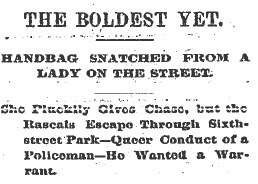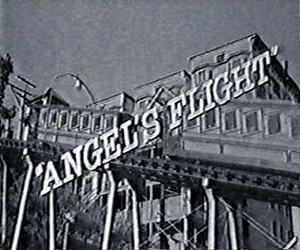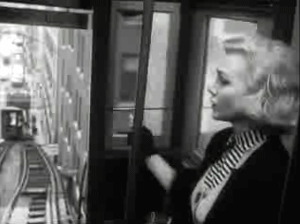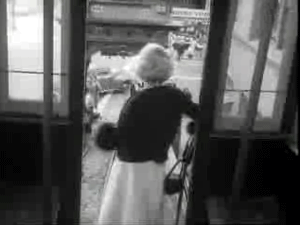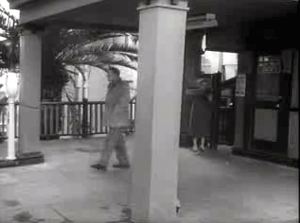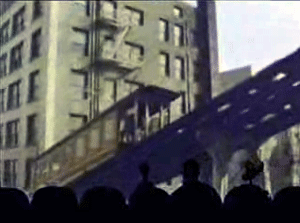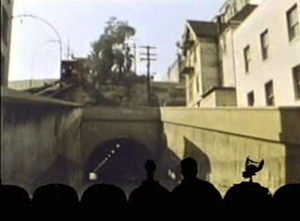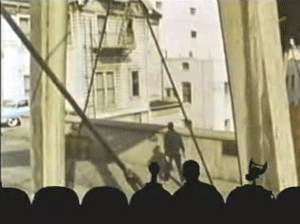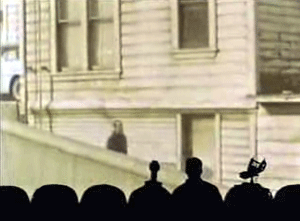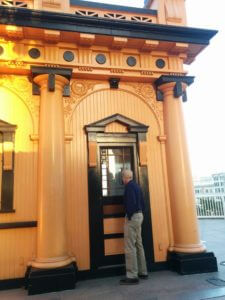
Last evening, we met on Bunker Hill, old friends coming together for an old friend, Angels Flight. As the sun set, the orange and black station house along with the cars, Olivet and Sinai, were bathed in its soft, orange glow. As the evening darkened, Angels Flight”™s arches and cars were lit by the low amber light of dozens of incandescent bulbs. It was a magical time, and for a moment, I was transported back to the time when I lived on Bunker Hill in its old Victorian neighborhood in the 1940”™s ”“ 1960”™s. That neighborhood has been gone for more than 50 years now, and Angels Flight is all we have to remind us of it.
As I looked out over the city from the top of Angels Flight, the twinkling lights of Grand Central Market came on, beckoning to us longingly. The Market stays open until 10:00 pm now, and it was filled with people enjoying its attractions. I thought, how nice it would be to board Angels Flight to go down there as I did years ago, have a bite to eat and join the people who looked to be having such a good time. They seemed miles away, though, at the bottom of long, daunting flights of stairs. That”™s exactly why Col. Eddy built Angels Flight 115 years ago, to join Bunker Hill and Downtown. What foresight! What a wonderful service to fill a civic need! And for decades, Angels Flight filled that need happily, faithfully, asking for little in return.
But sadly, Angels Flight is not running. For two years now, Angels Flight has sat quietly, waiting patiently for Los Angeles to come back to it. While Angelenos go busily about their lives, Angels Flight sits forlorn and vulnerable, largely ignored by the community it once served and we hope will serve again.
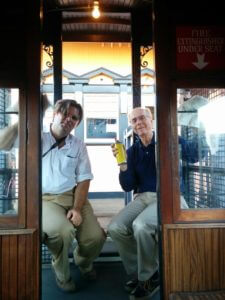
Angels Flight is not a nostalgic anachronism. It was and remains an important civic asset. Not just for its historic significance, but as an important piece of public transportation, carrying people from the heights of Bunker Hill to greater Downtown and back again.
When we came together at Angels Flight last evening, we came to pay attention to an old friend and to bear witness to its plight. We cleaned away graffiti that had thoughtlessly desecrated it. We had a 3-D scan done on Angels Flight so that anyone can board it online and take a vicarious ride. Angels Flight has served our city well and can again. But it needs our support and loving attention, or one day we will drive by and wonder why it”™s not there anymore. Then all we will have are photographs and memories. It”™s a lot more fun to actually ride it.

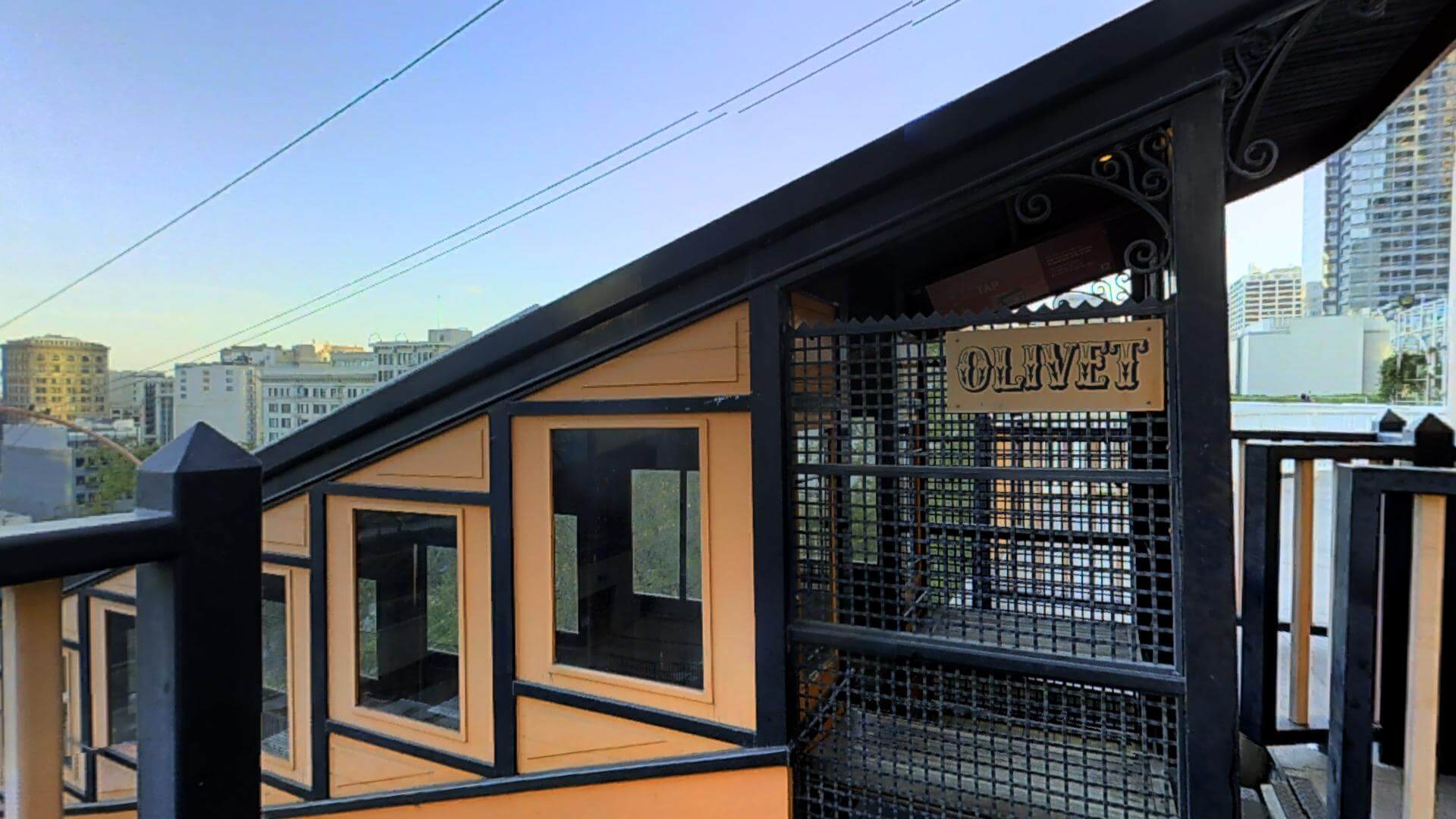
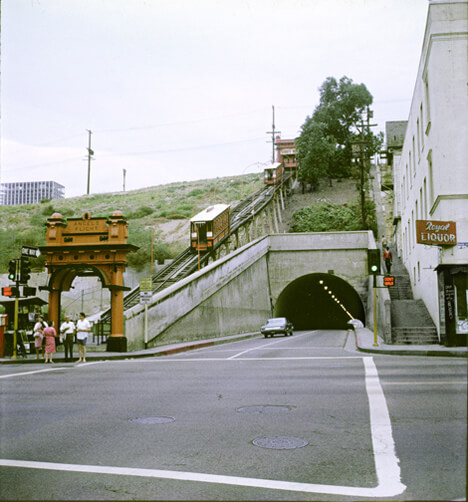

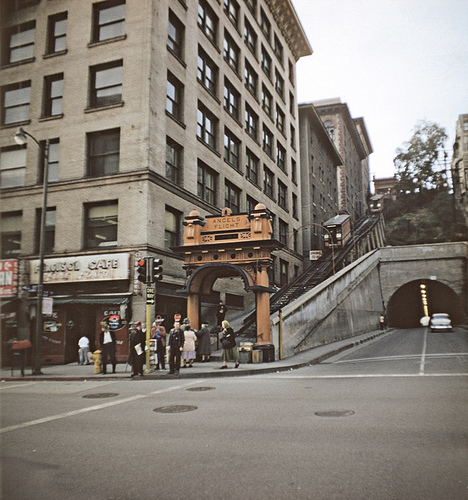
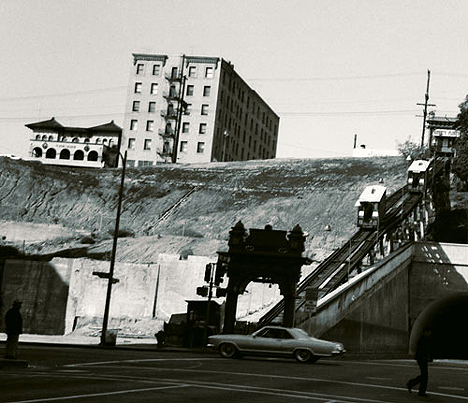
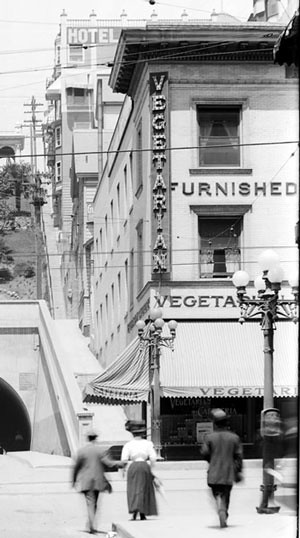

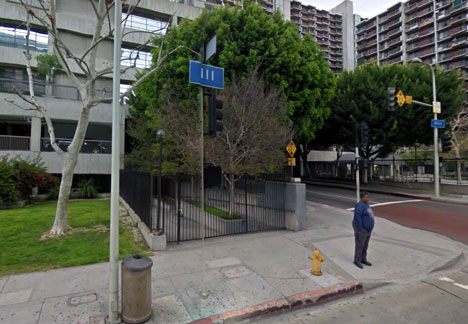
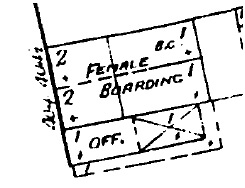
 However, the most notorious eyesores were the single-story, ramshackle cribs on Alameda, long rows of narrow rooms that prostitutes could rent by the night, at exorbitant rates, designated here on the Sanborn maps as "female boarding." The Alameda cribs were visible from the nearby Southern Pacific line, and rail passengers on their way to Los Angeles would gawk out the windows at prostitutes soliciting business from the sidewalks.
However, the most notorious eyesores were the single-story, ramshackle cribs on Alameda, long rows of narrow rooms that prostitutes could rent by the night, at exorbitant rates, designated here on the Sanborn maps as "female boarding." The Alameda cribs were visible from the nearby Southern Pacific line, and rail passengers on their way to Los Angeles would gawk out the windows at prostitutes soliciting business from the sidewalks.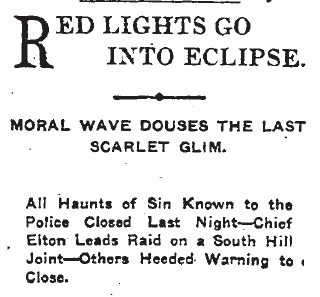 On March 31, 1904, police raided an establishment at 355 South Hill Street, operated by Ethel Wood. She was arrested along with three women, Mabel Stone, Dolly Long, and Hattie Jones. The four appeared in court the next day, all wearing long black veils to frustrate the looky-loos.
On March 31, 1904, police raided an establishment at 355 South Hill Street, operated by Ethel Wood. She was arrested along with three women, Mabel Stone, Dolly Long, and Hattie Jones. The four appeared in court the next day, all wearing long black veils to frustrate the looky-loos.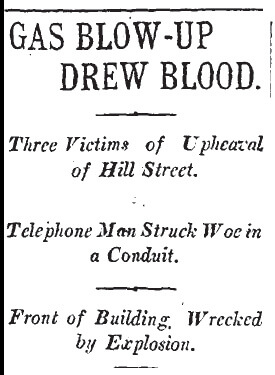

 Harry”™s world caught fire, leaving him dazed and in excruciating pain. The force of the explosion hurled him back against some pipes. The injured man was snapped back to his senses when a second blast thrust him out of the manhole and into the street. He was so violently tossed around that he rolled for a few feet, and then fell backwards through the manhole. Unbelievably, although badly burned, Harry survived.
Harry”™s world caught fire, leaving him dazed and in excruciating pain. The force of the explosion hurled him back against some pipes. The injured man was snapped back to his senses when a second blast thrust him out of the manhole and into the street. He was so violently tossed around that he rolled for a few feet, and then fell backwards through the manhole. Unbelievably, although badly burned, Harry survived.
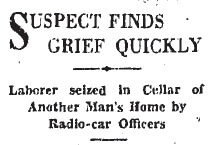


 LAPD had recently installed radios in their cruisers, so officers Webb and Hamblin made it to the scene in a mere 90 seconds. The hapless perpetrator wasn”™t familiar with the latest crime fighting advances, and was promptly arrested and booked on a charge of burglary.
LAPD had recently installed radios in their cruisers, so officers Webb and Hamblin made it to the scene in a mere 90 seconds. The hapless perpetrator wasn”™t familiar with the latest crime fighting advances, and was promptly arrested and booked on a charge of burglary.
